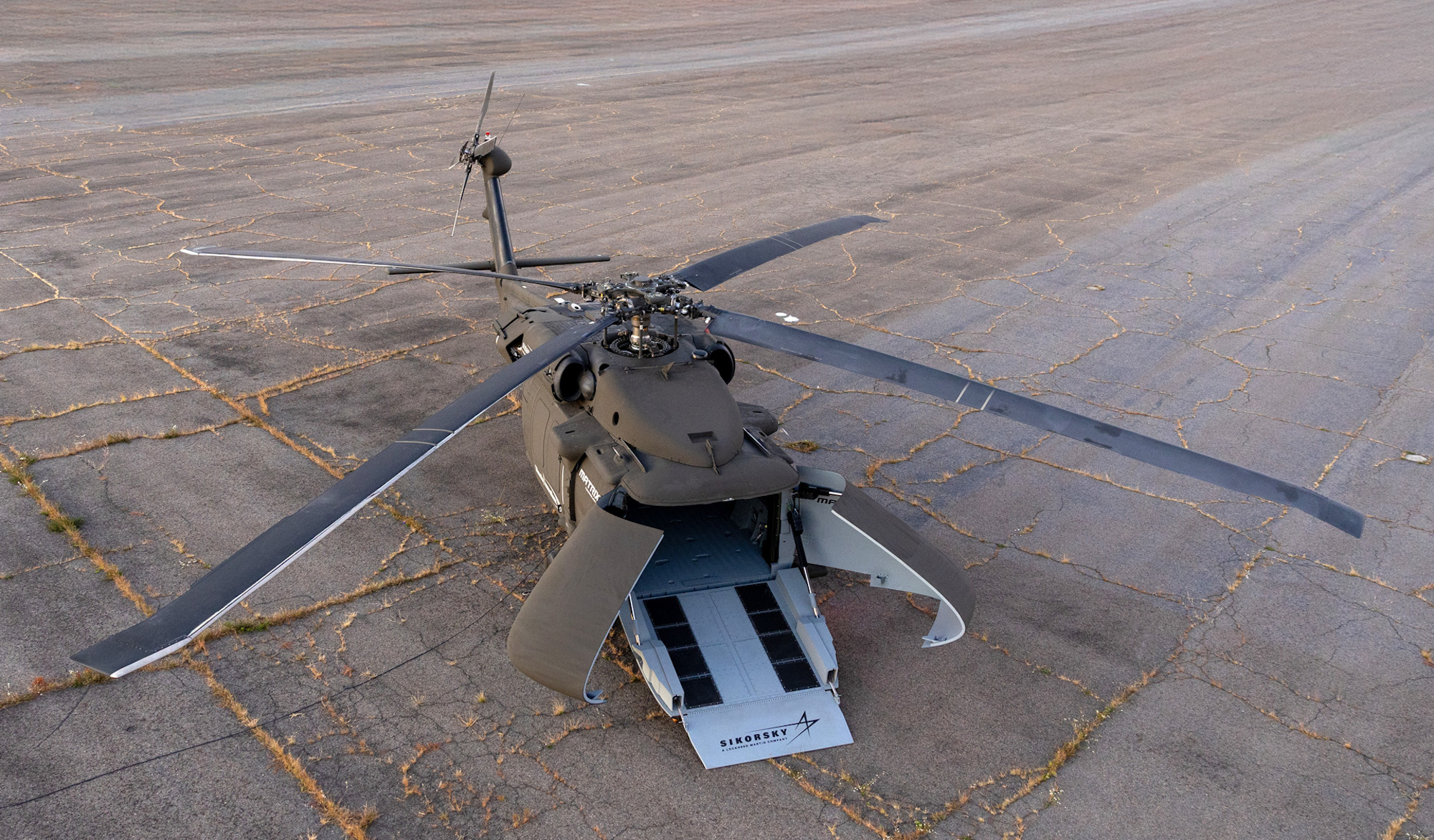Sikorsky Unveils “U-Hawk” Autonomous Black Hawk
SIKORSKY, a Lockheed Martin company unveiled its latest U-Hawk unmanned aircraft system (UAS) at the Association of the United States Army (AUSA) exhibition. The unveiled product is the result of a UH-60L Black Hawk helicopter being transformed into the S-70UAS U-Hawk in a span of 10 months.
The UH-60L’s cockpit was removed and replaced with actuated clamshell doors and ramp to provide 25% more cargo space than the usual Black Hawk and operates via a third-generation, low-cost, fly-by-wire system integrated with MATRIX autonomy technology. By removing the cockpit, all seats and crew stations from the aircraft, the U-Hawk helicopter becomes the first fully autonomous Black Hawk utility helicopter.
With a capability of self-deploying over 1600 nautical miles or loiter for up to 14 hours without refuelling, its first flight will take place next year. The S-70UAS U-Hawk aircraft on display at this week’s Association of the United States Army exposition shows a larger cabin space for cargo and retains the ability to load cargo from the side door, and externally lift 4080 kg using its cargo hook.
Sikorsky vice president and general manager Rich Benton said, “Sikorsky is innovating a 21st century solution by converting UH‑60L Black Hawks into a fully autonomous utility platform”. “We developed this prototype from concept to reality in under a year, and the modifications made to transform this crewed Black Hawk into a multi-mission payload UAS can be replicated at scale quickly and affordably. The U-Hawk continues the Black Hawk legacy of being the world’s premier utility aircraft and opens the door to new capabilities as a UAS.”
Operators control the U-Hawk via a tablet at the touch of a button, its two clamshell doors open and a ramp lowers to allow easy cargo loading or drive-on capability. To prepare for flight, the automated sequence is reversed. Once loaded, an operator inputs mission goals via the tablet. The MATRIX autonomy system automatically generates a flight plan, relying on cameras, sensors and algorithms to help navigate the U-Hawk aircraft safely to its destination.
“The U‑Hawk offers a cost‑effective utility UAS by leveraging commonality with the existing UH‑60 fleet, and its uncrewed nature reduces both operating and maintenance costs,” said Sikorsky Innovations director Igor Cherepinsky. “We focused on efficiencies in the retrofit by designing and manufacturing vehicle management computers, actuation components and airframe modifications. We will incorporate those efficiencies into future modifications and manufacturing for our family of UAS products.”-–shp/adj/dl (Pix:LOCKHEED MARTIN)
The U-Hawk is capable of:
- Accepting longer cargo, such as missiles, HIMARS pod of six rockets/two Naval Strike Missiles (NSM)/up to four Joint Modular Intermodal Containers
- Drive on/off an uncrewed ground vehicle such as the HDT Hunter Wolf 6×6 UGV.
- Roll-on/off supplies,
- Launch swarms of reconnaissance or strike drones, and deploy launched effects carrying sensors/munitions from quivers secured to the cabin.
- Carry internal fuel tanks for increased range or extended time on station.


